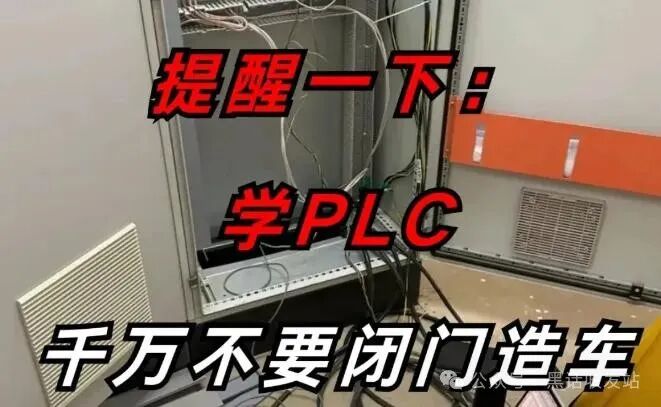
Intermediate Functions of PLC: Dynamic Compensation Algorithm Increases Control Accuracy by 3 Times!🔥 [Bottlenecks of Traditional Control]: Is your equipment’s accuracy still at the level of “a hair’s breadth off, a thousand miles away”? Whether it’s complex robotic arm movements or high-precision assembly line operations, do you often encounter the following issues? Vibration disturbances leading to control instability, thermal expansion causing accuracy shifts, delayed responses affecting overall efficiency. These problems leave your equipment’s performance wanting? Today, the dynamic compensation algorithm will change your perception! It can instantly triple control accuracy, allowing your PLC equipment to thrive in complex scenarios!💡 Dynamic Compensation Algorithm: The “neural network” of PLC control. The core concept of dynamic compensation is like an autonomous vehicle with intelligent navigation: it can not only perceive changes in the surrounding environment in real-time but also quickly adjust its behavior. Vibration Compensation: Real-time detection of mechanical vibration data, dynamically adjusting control signals to eliminate vibration effects. Temperature Compensation: Dynamically correcting action deviations based on temperature changes of the operating equipment. Delay Compensation: Using predictive algorithms to calculate deviations in advance, eliminating response lag issues. Real Case: A precision machining factory reduced its processing error from ±0.03mm to an astonishing ±0.01mm after adopting dynamic compensation. This single improvement increased the product qualification rate by 25%!⚙️ Three Core Technologies to Implement Dynamic Compensation Algorithm 1️⃣ Real-time Data Acquisition: The “thousand-mile eye” for precise perception. The first step in dynamic compensation is having a powerful real-time data acquisition system. For example: using high-speed sensors to capture mechanical vibration frequency and amplitude in real-time, monitoring temperature changes during equipment operation with thermocouple sensors, and obtaining displacement and speed data with high-resolution encoders. Case Analysis: An electronic component manufacturer improved production efficiency by 32% and reduced equipment failure rates by 48% after optimizing equipment operation status through real-time data acquisition! 2️⃣ Dynamic Prediction Algorithm: The “prophet” of future actions. The core of the dynamic compensation algorithm lies in prediction—analyzing current data to calculate potential future deviations in advance and compensating before deviations occur. Vibration Prediction: Analyzing vibration spectra based on Fourier transform to predict possible resonance points. Thermal Expansion Prediction: Calculating dimensional changes in advance based on material thermal expansion coefficients and current temperatures. Delay Prediction: Using PID dynamic optimization algorithms to generate control signals in advance. Shocking Truth: A mold factory reduced mold processing time from 6 hours to 4 hours after adopting dynamic prediction, improving mold quality by 20%! 3️⃣ Adaptive Control: The “AI brain” for precise compensation. Adaptive control is the soul of dynamic compensation; it continuously adjusts control parameters based on real-time feedback to ensure the system is always in an optimal state. Parameter Self-Adjustment: Real-time adjustment of PID parameters based on the current state of the system to optimize control accuracy. Feedback Closed Loop: Ensuring every operation is precise through high-frequency feedback. Intelligent Learning: Automatically optimizing future compensation strategies through historical data analysis. Real Scene: A food packaging factory optimized packaging machinery using adaptive control, successfully increasing product packaging speed from 100 packages per minute to 150 packages, reducing machine downtime by 50%.🚀 Five-Minute Introduction to Dynamic Compensation Algorithm: Even beginners can easily get started. Select Appropriate Sensors: Choose hardware such as vibration sensors, temperature sensors, and encoders according to equipment needs. Write Dynamic Compensation Logic: Use mainstream PLCs like Siemens S7-1500, combined with ladder diagram language or SCL to write predictive compensation algorithms. System Debugging: Start with a single module, gradually test compensation effects, and adjust parameters based on feedback. Implement Global Optimization: Deploy the dynamic compensation algorithm throughout the entire equipment process to ensure compensation logic is consistently applied.💼 Practical Case: The Upgrade Path of Industry Benchmarks High-end machine tool manufacturing: A machine tool factory optimized processing accuracy using dynamic compensation algorithms, increasing tool life by 40% and saving approximately 300,000 yuan in tool costs annually. Semiconductor packaging: A semiconductor packaging factory improved chip packaging yield from 95% to 99.5% using delay compensation technology, increasing annual output value by 50 million yuan. Robotics application: A logistics robot manufacturer successfully developed a stacking robot suitable for high-vibration environments using vibration compensation technology, doubling order volume.⚠️ Industry Insider: The Truth You Might Not Know Why is this technology rarely promoted? The dynamic compensation algorithm is a “double-edged sword” for equipment manufacturers! Equipment manufacturers are reluctant to recommend it because it can significantly extend the lifespan of equipment, reducing opportunities for new equipment sales. A senior engineer in the automation industry revealed: “Companies that master the dynamic compensation algorithm can usually reduce equipment maintenance costs by 30% and even extend hardware lifespan by 3-5 years.”🔮 Take Action Now: Your PLC Optimization Plan Starts Here! Assess Needs: Identify which aspects of your equipment need compensation the most—vibration, temperature, or delay? Select Tools: Download our “Dynamic Compensation Algorithm Development Guide” to obtain algorithm templates suitable for your equipment. Quick Experiment: Choose a non-critical device to test the algorithm’s effects, and after accumulating experience, promote it to core devices. Real Feedback: A reader shared: “After implementing dynamic compensation in pharmaceutical equipment, the stability of equipment operation improved by 70%, saving 150,000 yuan in hardware upgrade costs!”📣 Interactive Time: Share Your Dynamic Compensation Practice Stories! Which part of your equipment needs precision optimization the most? What PLC model are you using? Have you tried the dynamic compensation algorithm? What were the results? Limited-Time Benefit: The first 20 readers to share their experiences will receive our “Dynamic Compensation Algorithm Optimization Plan” worth 3,000 yuan for free! The dynamic compensation algorithm is not just a technology; it is an upgrade in thinking! Master it, and your PLC control capabilities will reach new heights, becoming a true technical leader in the industry! What are you waiting for? Start your PLC control accuracy revolution now! #IndustrialAutomation #PLCAccuracyOptimization #DynamicCompensation #ControlTechnology #TechnicalInnovation